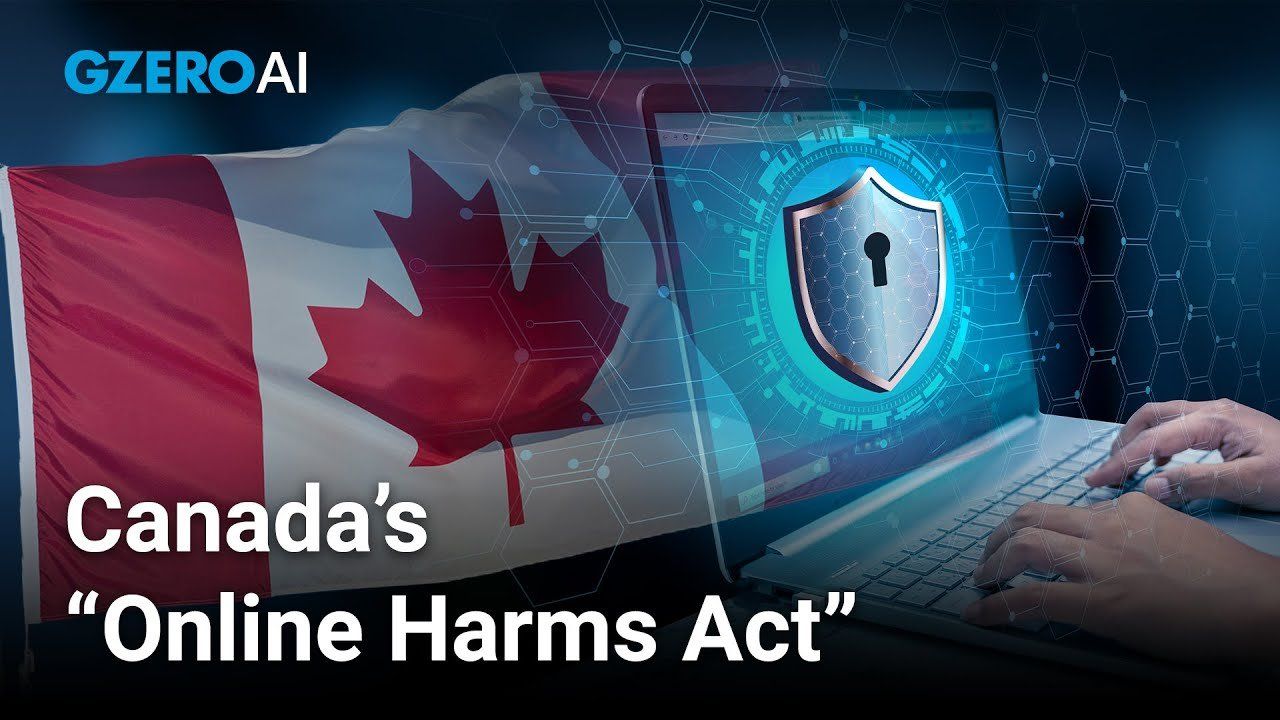GZERO AI Video
AI and Canada's proposed Online Harms Act

Canada wants to hold AI companies accountable with proposed legislation | GZERO AI

In this episode of GZERO AI, Taylor Owen, professor at the Max Bell School of Public Policy at McGill University and director of its Centre for Media, Technology & Democracy, takes at a look at the Canadian government’s Online Harms Act, which seeks to hold social media companies responsible for harmful content – often generated by artificial intelligence.
So last week, the Canadian government tabled their long-awaited Online Harms legislation. Similar to the Digital Services Act in the EU., this is a big sweeping piece of legislation, so I won't get into all the details. But essentially what it does is it puts the onus on social media companies to minimize the risk of their products. But in so doing, this bill actually provides a window in how we might start regulate AI.
It does this in two ways. First, the bill requires platforms to minimize the risk of exposure to seven types of harmful content, including self-harm content directed to kids or posts that incite hatred or violence. The key here is the obligation is on social media platforms, like Facebook or Instagram or TikTok, to minimize the risk of their products, not to take down every piece of bad content. The concern is not with all of the each individual pieces of content, but the way that social media products and particularly their algorithms might amplify or help target its distribution. And these products are very often driven by AI.
Second, one area where the proposed law does mandate a takedown of content is when it comes to intimate image abuse, and that includes deepfakes or content that's created by AI. If an intimate image is flagged as non-consensual, even if it's created by AI, it needs to be taken down within 24 hours by the platform. Even in a vacuum, AI generated deepfake pornography or revenge porn is deeply problematic. But what's really worrying is when these things are shared and amplified online. And to get at that element of this problem, we don't actually need to regulate the creation of these deepfakes, we need to regulate the social media that distributes them.
So countries around the world are struggling with how to regulate something as opaque and unknown as the existential risk of AI, but maybe that's the wrong approach. Instead of trying to govern this largely undefined risk, maybe we should be watching for countries like Canada who are starting with the harms we already know about.
Instead of broad sweeping legislation for AI, we might want to start with regulating the older technologies, like social media platforms that facilitate many of the harms that AI creates.
I'm Taylor Owen and thanks for watching.
In his latest Quick Take, Ian Bremmer explains a major shift in the Ukraine war: Europe, not the United States, is now driving the strategy.
In 2025, GZERO’s Global Stage coverage highlighted a recurring theme: artificial intelligence is transforming every corner of the globe.
It's one of the few sources Americans across the political spectrum still rely on.
At the start of the 21st century, Destiny’s Child was atop the US charts, “Google” was a little known search website with a weird name, and two things happened that would shape the world we live in today.